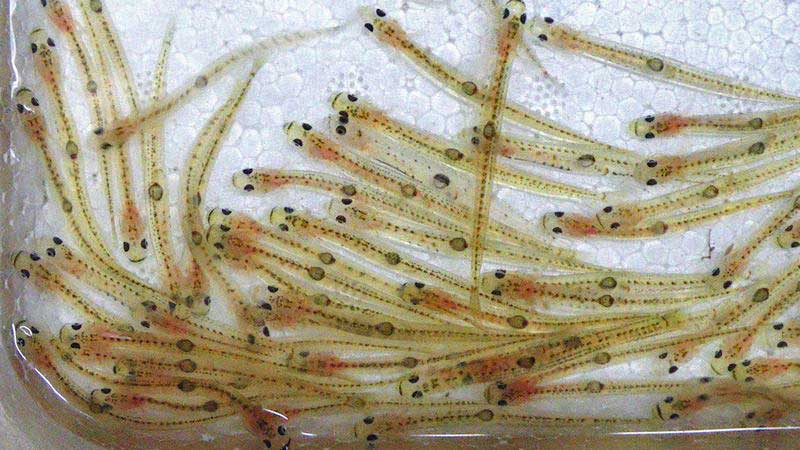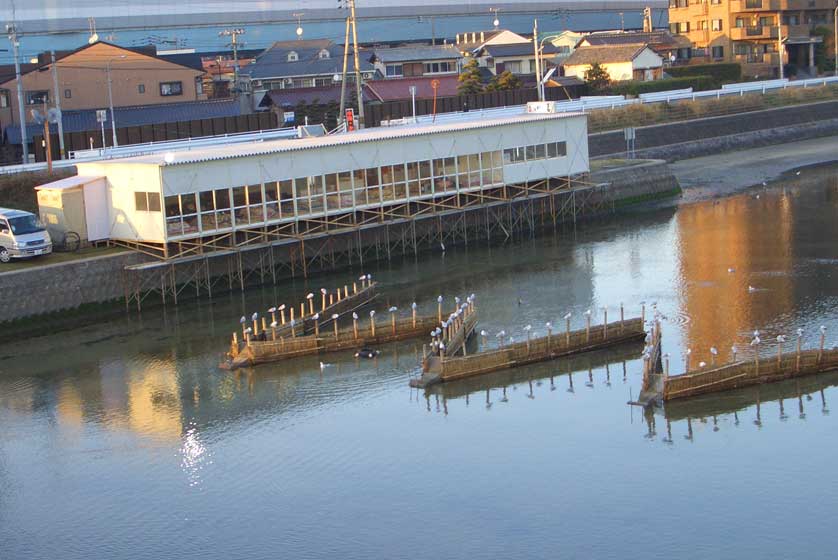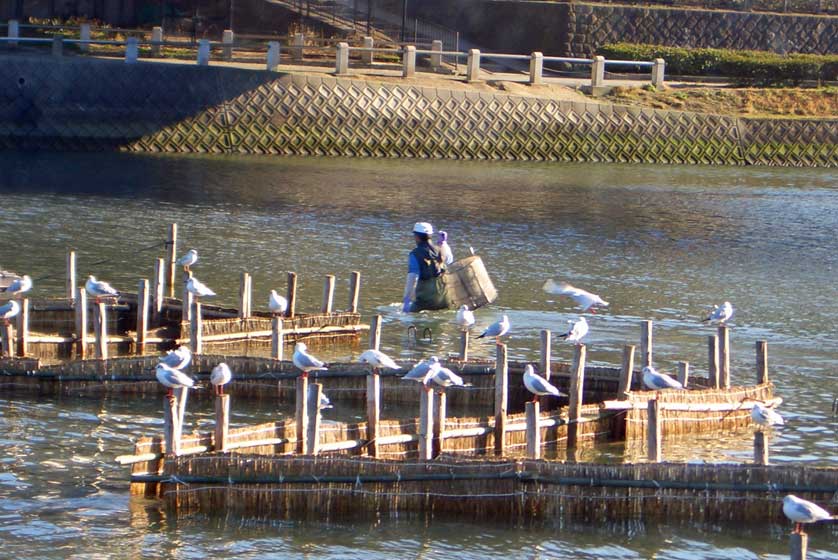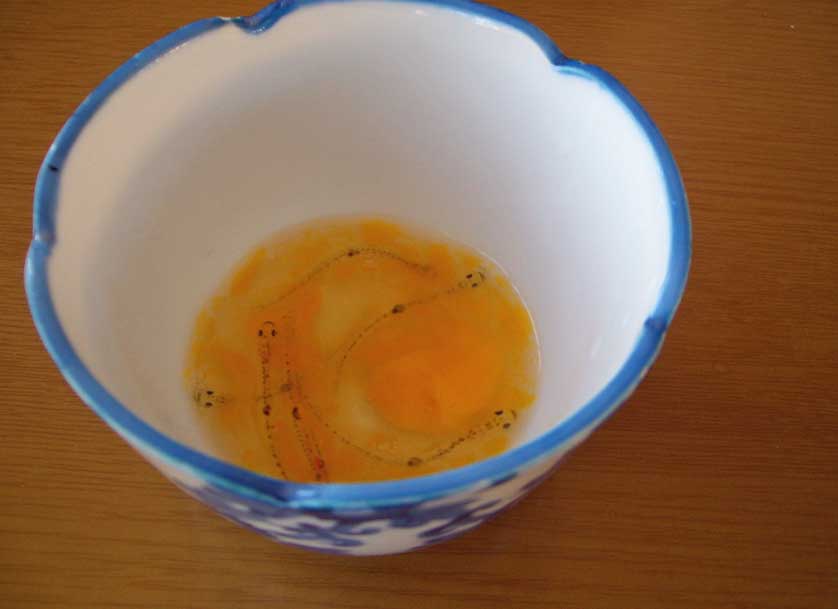Shirouo: the transparent fish that dances in your mouth

In the port city of Fukuoka, a unique and controversial culinary tradition has been passed down for generations: eating live shirouo, tiny transparent fish appreciated for the sensation of them "dancing" in the mouth while being consumed. This practice, known as odorigui, is a delicacy that draws curious foodies, but also raises ethical questions about the consumption of live animals.
What are shirouo? Biology and characteristics of the ice goby
Shirouo, also called ice gobies in English, are very small transparent fish of the species Leucopsarion petersii. They have thin, elongated, eel-like bodies up to 13 centimeters in length and retain a larval form even as sexually mature adults. Shirouo lack scales, have a swim bladder, and small pelvic fins. Their transparent bodies allow the eggs to be visible through the body wall.
There are two lineages of shirouo: the Sea of Japan and Pacific Ocean lineages, related to the paths of ocean currents. In the ocean, they feed on marine plankton and algae. Shirouo are anadromous, meaning they enter freshwater rivers to spawn, stop feeding, and die directly afterwards. This short lifespan adds to the rareness and seasonality of consuming fresh shirouo.
The tradition of eating live shirouo in Fukuoka
The origins of eating live shirouo in Fukuoka are steeped in legend. One story recounts that 300 years ago during the Edo period, after a particularly bad flood, the local feudal lord ordered villagers to clean up and rewarded them with barrels of sake rice wine. As the farmers drank by the river, they noticed tiny fish caught in the remaining flood waters, scooped them up, and ate them live along with the sake - starting the shirouo tradition.
Today in Fukuoka, the seasonal Koharu ("Small Spring") restaurant specializes in shirouo dishes. It's a simple white building that is dismantled at the end of each shirouo season from mid-February to early April. Locals see the restaurant's iconic fish traps, called yaru, stretching across the clear Muromi River as a sign of winter ending.

Koharu Shirouo restaurant
The shirouo fishing technique using yaru traps in the Muromi river
The Koharu restaurant's yaru fish traps are one of Fukuoka's most famous seasonal sights. Wooden posts are hammered into the shallow riverbed, holding up rice straw mats that filter the water and catch the tiny shirouo as they swim upstream to spawn. Restaurant staff harvest the live fish from the yaru nets to be served immediately to diners.
While shirouo were once abundant in all local rivers 300 years ago, today they can only be found in the Muromi River. Spotting fishermen collecting shirouo from the yaru and seeing the clear river water is part of the seasonal experience at Koharu restaurant, transporting diners to a simpler time.

Shirouo traps, Fukuoka
How to eat live shirouo: the tasting experience at Koharu restaurant
At Koharu, a bowl of lively, darting shirouo arrives at the table, along with a raw quail egg and vinegar. The egg and vinegar are mixed in a separate bowl, then diners use a sieve-like ladle to scoop up wriggling fish and transfer them to the vinegar mixture, which is said to numb them.
Using chopsticks, a shirouo is caught and - before it can be contemplated too long - is quickly placed live into the mouth whole. Diners experience the odd sensation of the fish "dancing" or wriggling around the mouth, stimulating the tongue and taste buds in unusual ways before being swallowed or chewed. Shirouo are typically enjoyed with shots of shochu liquor, which helps wash them down and ease any lingering sensations in the throat or stomach after.

Shirouo, a prized delicacy in Japan and South Korea
As with many rare, seasonal foods, live shirouo are considered a delicacy in Japan and command high prices. They are most associated with Fukuoka but can be found in some other cities as well. In South Korea, a very similar tiny transparent fish called myeongran is also eaten live.
While odorigui (dancing eating) of live shirouo is the peak gourmet experience, the little fish are also served in less shocking preparations like tempura, dried and preserved as tsukudani, or cooked in chawanmushi savory egg custard. However, connoisseurs believe the flavor and texture is best appreciated raw and wriggling.
The ethics of eating live animals: the controversy around shirouo and odorigui
The practice of odorigui, or eating live seafood like shirouo, is controversial and disturbing to many. Animal welfare advocates argue it is cruel and causes unnecessary suffering to consume creatures while they are still alive and moving.
Even in Japan, where odorigui has a long tradition and live seafood is considered the ultimate in freshness and flavor, some diners are put off by the idea of swallowing whole animals that could still feel sensations. Restaurants like Koharu that serve live shirouo have to balance customer curiosity with changing attitudes about the ethics of the practice.
Shirouo fishing and consumption, a unique part of Fukuoka's culinary culture and heritage
Despite the ethical quandaries it raises, eating live shirouo remains an iconic part of Fukuoka's traditional food culture. For many locals, the arrival of shirouo season and the sight of the Koharu restaurant's yaru traps on the Muromi River are important markers of spring and a connection to the region's heritage.
As the practice of odorigui becomes less common, experiencing this rare delicacy is a way to keep Fukuoka's culinary traditions alive, learn about local history, and decide for oneself whether dancing fish are a novelty worth tasting or a step too far. Either way, shirouo season is a unique window into the complex relationship between food, culture, and ethics in Japan.









